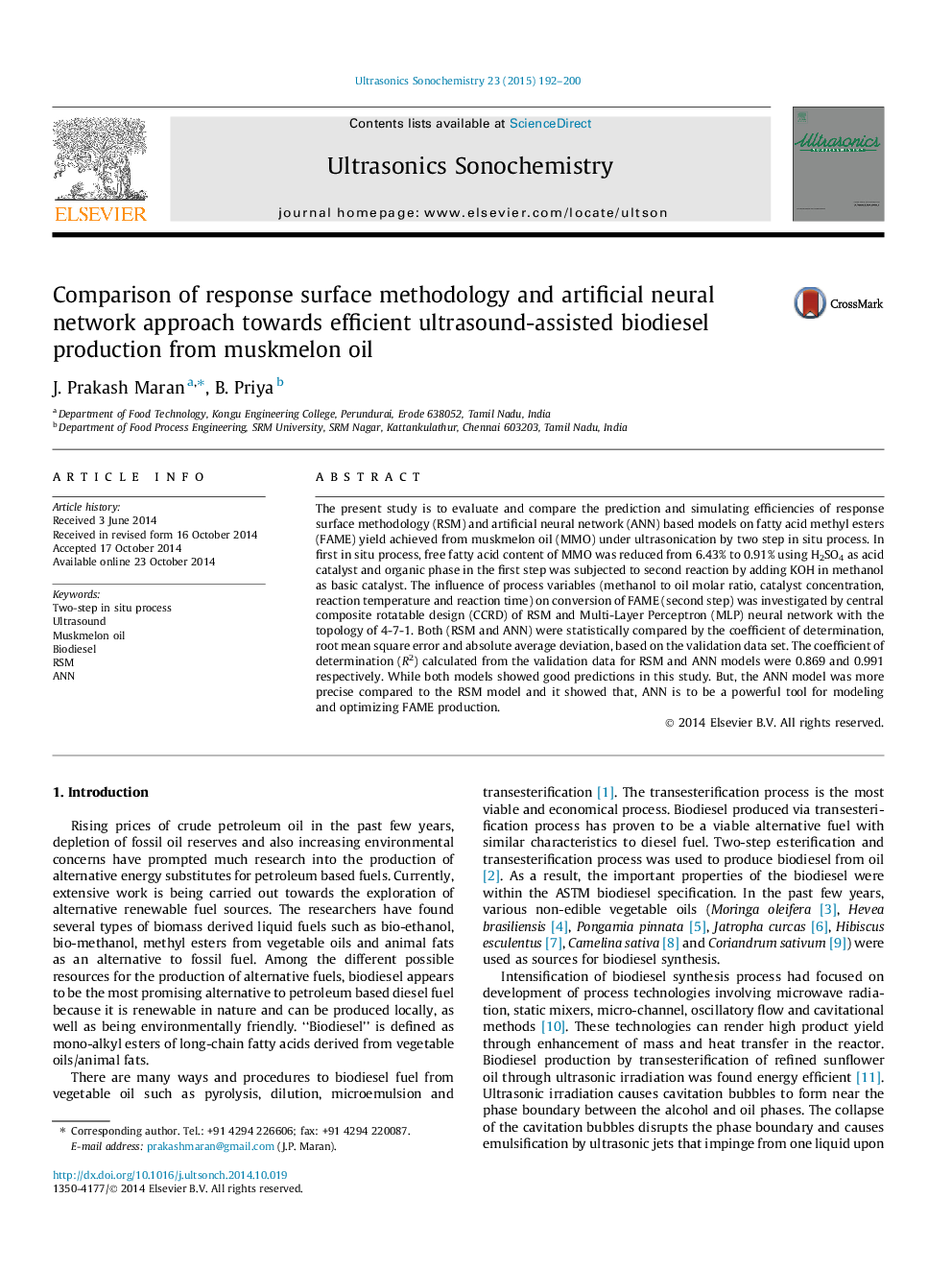| Article ID | Journal | Published Year | Pages | File Type |
|---|---|---|---|---|
| 7704019 | Ultrasonics Sonochemistry | 2015 | 9 Pages |
Abstract
The present study is to evaluate and compare the prediction and simulating efficiencies of response surface methodology (RSM) and artificial neural network (ANN) based models on fatty acid methyl esters (FAME) yield achieved from muskmelon oil (MMO) under ultrasonication by two step in situ process. In first in situ process, free fatty acid content of MMO was reduced from 6.43% to 0.91% using H2SO4 as acid catalyst and organic phase in the first step was subjected to second reaction by adding KOH in methanol as basic catalyst. The influence of process variables (methanol to oil molar ratio, catalyst concentration, reaction temperature and reaction time) on conversion of FAME (second step) was investigated by central composite rotatable design (CCRD) of RSM and Multi-Layer Perceptron (MLP) neural network with the topology of 4-7-1. Both (RSM and ANN) were statistically compared by the coefficient of determination, root mean square error and absolute average deviation, based on the validation data set. The coefficient of determination (R2) calculated from the validation data for RSM and ANN models were 0.869 and 0.991 respectively. While both models showed good predictions in this study. But, the ANN model was more precise compared to the RSM model and it showed that, ANN is to be a powerful tool for modeling and optimizing FAME production.
Keywords
Related Topics
Physical Sciences and Engineering
Chemistry
Chemistry (General)
Authors
J. Prakash Maran, B. Priya,
